The Greek Islands are a dream destination on every bucket list, and for good reason.
Rocky islands rimmed with paradisiac azure beaches, flavour-packed fresh fruit & veggies, and quaint whitewashed cyclidic homes that feel like your stepping into a movie.
I have a partiality for smaller Greek Islands with soothing rhythms, untouched by mass tourism. But when I recently visited Crete, the largest of the Greek islands, I was utterly dazzled.
Crete doesn’t just have charming towns, immaculate beaches, and some of the best food in Greece, it also has an extraordinary World War II history, entwined with Australia and New Zealand.
Sure, I wanted to spend my time in Crete relaxing under a beach umbrella and filling up on Cretan cheese pies, but as a true blue Aussie, I also wanted to witness firsthand what life would have been like for ANZAC soldiers defending the island during the climactic WWII Battle of Crete.
That’s exactly what I got when I joined Specialty Tours Greece’s 5-day tour Walking in the Footsteps of ANZAC Soldiers in Crete (yes, it’s a mouthful!).
About the Tour
This small-group 5-day tour explores the island of Crete, focusing on sites most significant to the ANZAC soldiers, like the places they hid from enemy forces, and beaches where they evacuated. It also includes time to explore the modern city of Chania and ruins of the ancient Minoan palace in Knossos.
The tour runs every year around mid-May to align with annual war memorial services. May is just before peak tourism season in Crete, so while the weather is mostly sunny, we dodged the summertime crowds.
Transfers to and from Crete are covered within the tour package, as well as 4 nights’ accommodation inclusive of breakfast and dinner.
If you’d like to join the next Walking in the Footsteps of ANZAC Soldiers in Crete tour, get in touch with:
- ANZAC Tours in Greece (Facebook), or email Athina at [email protected] (Greece); or
- Global Tours, or email Frank at [email protected] (Australia / New Zealand)

Note: We only attended the 5-days in Crete portion of a larger tour that also spends a day in Athens then continues to follow the footsteps of ANZAC soldiers in Italy.

Battle of Crete 101
In case, like mine, your high school education skipped over the crucial Battle of Crete, here’s the basic gist:
- Under former Italian Prime Minister Benito Mussolini, Italy invaded Greece on October 28th 1940 starting the Greek-Italian War.
- Cretan soldiers were sent to the defend mainland Greece and Allied forces garrisoned Crete in case of a naval attack.
- Greece succeed in pushing the Italians back into Albania until March 1941 when German forces were sent to reinforce Italy.
- Mainland Greece was lost to Germany on 20th April 1941.
- Surviving Allied troops evacuated the mainland and reinforced the garrison on Crete, although most had lost their weapons and equipment.
- The Germans invaded Crete by air on 20th May 1941, starting the Battle of Crete.
- After a short initial success, the Allies were pushed back and Germany took Maleme Airfield, allowing them to bring in reinforcements.
- Allied forces fought fiercely alongside civilians for 6 days with limited supplies (remember the Cretan soldiers and weapons had been sent to defend the mainland).
- Crete was lost to Germany on 27th May 1941. Surviving Allied soldiers were evacuated on the south side of Crete by the British Royal Navy.
- Because of the delays to the German forces in Greece, they were unable to reach Russia before winter turning the tide in WWII.
The Battle of Crete was one of the most significant battles of WWII as it was the first airborne invasion in military history, the first time Germans encountered mass resistance from civilians, and the first time the Allied forces used intelligence decoded by the Enigma machine.
Victory was shallow for Nazi Germany. Ultimately the Battle of Crete became the turning point in the war and beginning of the end for Nazi Germany.


Greece tip: Want to book your own ferry from Athens to Chania? I suggest using Bookaway.com.
Getting to Crete
We met our tour group in Athens, took a minibus to Piraeus port, and embarked on a 9-hour, overnight ferry to Heraklion Port in Crete.
This isn’t a typical ferry, it’s more like a mini cruise ship. Getting a decent night sleep wasn’t a problem as we had our own cosy cabin with bunk beds and a private bathroom.
A series of escalators at the ferry entrance ensured we didn’t have to lug our suitcases up stairs (yay!). It also had 2 reasonably-priced restaurants (a la carte & buffet) and a 24-hour bar.
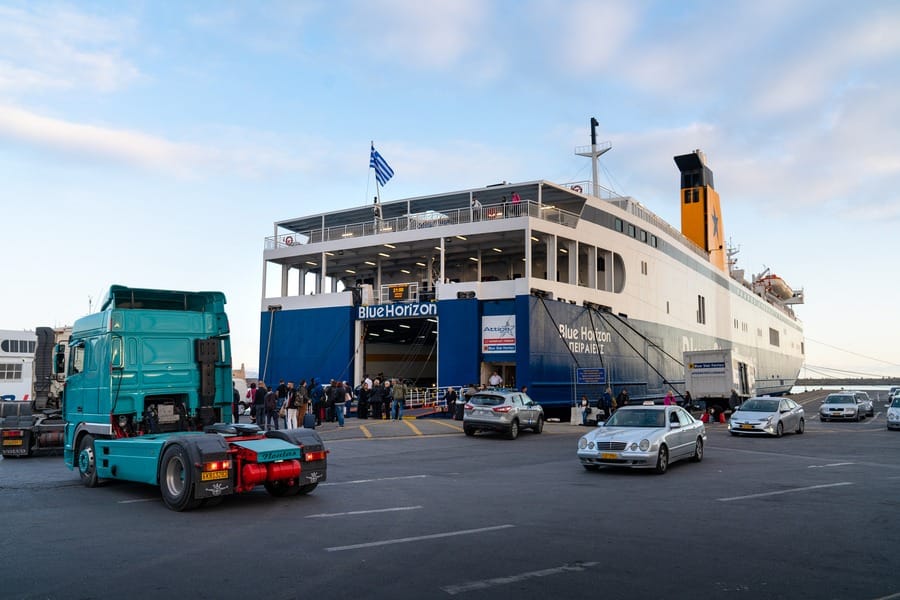
We landed in Heraklion at 6:30am and met our cheerful guide Ritsa and driver Kostas who showed us around Crete for the next 5 days.


Paying Respects at War Monuments
Clashes throughout the Battle of Crete stretched far and wide across the island and today war monuments honour ANZAC soldiers who fought bravely. We visited as many of these sites as possible, gaining a vivid picture of the darkest days of 1941. The tour passed rocky gorges and steep mountains that the soldiers trekked to evacuate via Preveli Beach and Sfakion Bay. Our guide, Ritsa shared moving stories that took place at each site, most involved loyalty and mateship with relatively happy endings.


We made frequent stops on the way to and from the monuments at scenic lookout points or nearby towns. On the way to the monument at Chora Sfakion, we made an impromptu stop at Asfikou War Museum, a private collection of WWII uniforms, parachutes, weapons and personal belongings seemingly in the middle of nowhere. The richness of the exhibit was completely unexpected and provided surreal insight into the daily lives of Allied soldiers, German soldiers, and civilians alike.
War monuments we visited included:
- 30th and 33rd Squadron RAF Memorial near Maleme Airfield
- Battle of Galatas Monument in Galatas Village
- 42nd Street Memorial in Tsikalaria
- Monument to the Allied Forces in Chora Sfakion, one of the main evacuation points
- Preveli Monastery where several soldiers hid before evacuating at Preveli Beach, and
- Greek Australian War Memorial where we laid a wreath.

The monument to the Battle of Galatas was the smallest we visited but left the biggest impact. I’d dare say it was the highlight of the tour. Next to the monument is a modest 1-room museum with war photos, weapons, and certificates that doubles as the town’s medical centre. Inside the room were a handful of local seniors waiting to see a doctor. Among them, 93-year-old Chariklia, who was a 14-year old girl at the time of the war.
Our group was honoured when Chariklia volunteered to share her memories of the war with us. Recalling anecdotes as if it happened yesterday, she starting with two New Zealander soldiers who defended her family, Dave and Les. She never found out if they safely evacuated.
The Allied soldiers left an unforgettable impact on local communities, fighting beside civilians “as one fist”. Fighting so far from their homes, as if this land was their own.
Families like Chariklia’s sheltered soldiers in their homes, disguising them in civilian clothing to assist with their evacuation. Although Chariklia could only speak Greek (Ritsa translated her stories for us), her vivid emotions and expressions said everything. We felt the powerful bond between Cretans and ANZACs forged in conflict, strong as ever 78 years later.
I had goose bumps.
We saw firsthand how the soldiers’ sacrifices changed the lives of ordinary Cretans like Chariklia, which made the Australians and New Zealanders in our tour group extremely proud of our shared heritage.

Attending the Annual Memorial Service at the Allied War Cemetery, Souda Bay
We visited 2 war cemeteries as part of our ANZAC tour of Crete, the Maleme German Military Cemetery and the Allied War Cemetery at Souda Bay. Both were beautifully landscaped with tidy lawns, blooming flowers, and birds delicately chirping. Peaceful resting places for soldiers whose lives ended too soon.
At the Allied War Cemetery one of our group members, Frank, found the grave of his dad’s cousin and had the opportunity to lay a wreath. A small office at the cemetery holds a comprehensive list of the names and graveyard locations of each soldier, so if you have a relative buried in Crete, it’s easy to locate their resting place to pay your respects.

We returned to the Allied War Cemetery on our last day in Crete, the 20th of May, to take part in the official commemorative ceremony. In attendance were the families of veterans from Commonwealth countries and descendants of the Cretans who fought alongside them.
The assistant chaplain for the Anglican Church in Greece lead a touching service with prayers for the fallen before representatives from the Greek Armed Forces, Commonwealth countries, United States and Germany payed their respects by laying wreaths.
With ceremonies as moving as this, I’m hopeful our generation will never forget the pain of war.
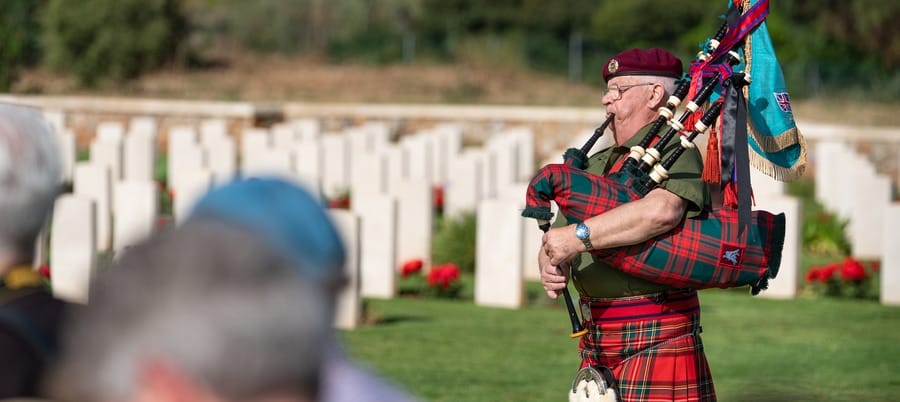
Walking Through Ruins of the Minoan Palace Behind the Legend of the Labyrinth
Although the focus of our tour was on WWII we also saw a little ancient history at the archaeological site of the Minoan Palace of Knossos. The palace was more than just the residence of the royal family, it was also the cultural, religious, and political centre of the Minoan civilisation from 2,000 BC to 1,100 BC. As you might expect, this archaeological excavation site is massive.
Many ancient buildings have been reconstructed so visitors can visualise the extreme opulence and advanced technologies to which this bronze age civilisation was accustomed. Reconstructions include colourful frescoes, mosaics, and repairs to an up-hill water system. Yes, you read that correctly.
Ritsa provided a walking tour of the palace ruins, pointing out significant sites like the royal chambers, throne room, and a series of winding corridors said to have inspired the Greek legend of the minotaur and the labyrinth.
After the tour, we visited the Heraklion Archaeological Museum, home to precious artefacts discovered at the Knossos archaeological site. Exhibits included Neolithic creations like loom weights and sewing needles made from animal bones, gold jewellery imported from Egypt, ceramic and stone pots and vessels, farming tools (very similar to the ones we use today), and the original frescoes from the Minoan palace.
Exploring Chania
One of my favourite things about this tour was the balance between visiting historical WWII sites and experiencing modern Crete. Our itinerary included two stops in Chania, one of the main cities and cultural hubs along the north coast of the island.
Chania is divided into 2 distinct sections, an old town and a modern city. The old town is focused around the Venetian-era harbour with sections of the Venetian city walls and several historic buildings still remaining. Many of these old stone buildings now house modern stores, restaurants or apartments, creating a charming contrast between old and new.
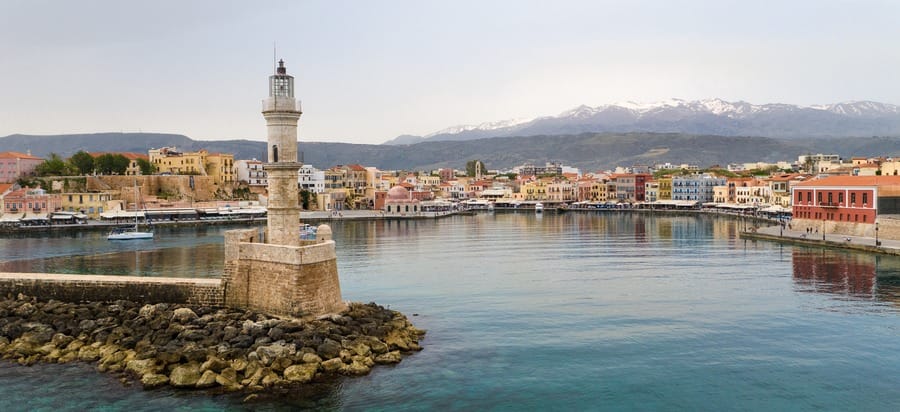
Ritsa guided us on foot around the old town, visiting the Old Chania Market to sample fresh, local produce, exploring “Leather Lane” to see locally made leather jackets, shoes, and handbags, and through a series of quaint alleyways to discover Chania’s architectural history.
Ritsa said the best way to explore Chania was to continuing wandering through the alleyways and left us with free time to do exactly that.
Travel tip: While in Crete I used my trusty Tep Wireless internet hotspot to stay online wherever we went. It supports up to 5 devices at a time. Read my full review...
Where to Stay in Crete
The tour included 4 nights’ accommodation at the Santa Marina Beach Resort, part of the Giannoulis Hotels & Resorts Group.
The hotel comprises of 3 sections connected by a pedestrian underpass. We stayed in the Beach Complex with gorgeous views of the sparkling ocean from our private balcony. The ground floor lobby has direct access to the white sandy beach, lined with those beach umbrellas I’d been dreaming of!

The Pool Complex and Pearl Wing are located across the underpass with easy access to the swimming pool, pool bar, and gym. The tour itinerary kindly left a few hours each day for us to swim at the beach or enjoy a drink in the lobby or by the pool.

Breakfasts and dinners were in the main buffet restaurant which served a huge variety of classic and modern Greek cuisine as well as a few international dishes. One night, we were treated to traditional live music and Cretan dancing.
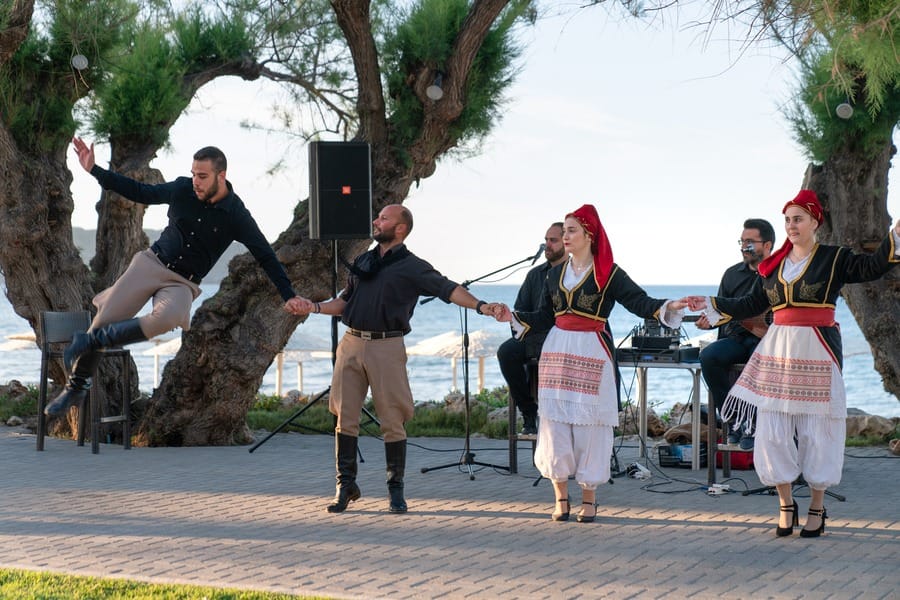
Santa Marina Beach Resort is the perfect accommodation for families and groups visiting Crete.
Where Else To Stay In Crete
If you want to travel to Crete on your own, I also recommend these 3 other hotels:
Santa Marina Plaza
Santa Marina Plaza is an adults-only boutique hotel just down the road from Santa Marina Beach Resort. The hotel’s uber-relaxing vibes make it the ideal place to unwind and restore.
Grand Bay Beach Resort
Another adults-only hotel, Grand Bay Beach Resort has 9 different pools! The main infinity pool overlooks the serene sea. The other pools are smaller and shared between designated rooms.
The hotel runs a series of regular activities, including sunset yoga, Greek dancing, and olive oil tasting. Guests have the option to book all-inclusive or premium all-inclusive accommodation so there’s no need to worry about meals, drinks at the bar, daily activities, or even getting a massage during your stay, its already included. Did somebody say “relaxing vacation”?
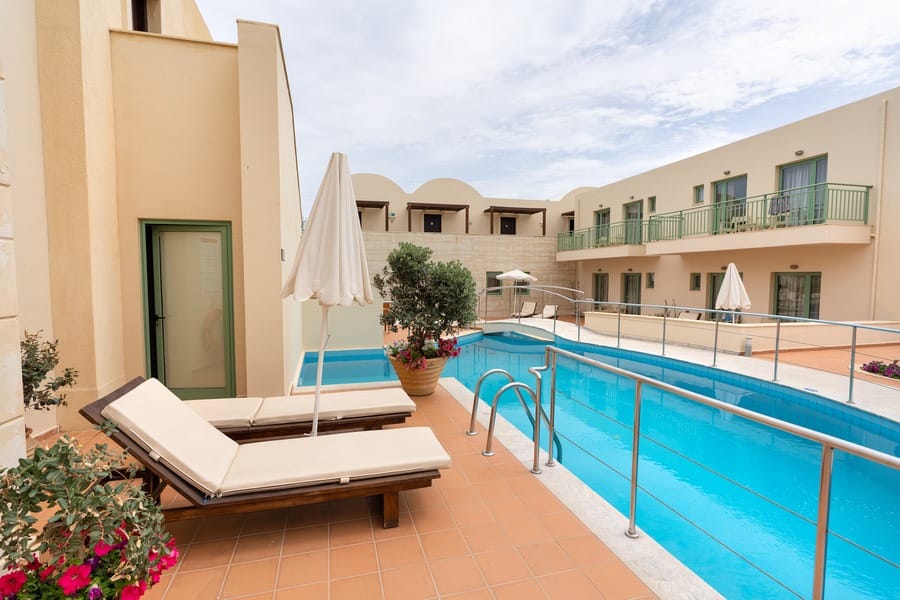
Cavo Spada
Not far from the Grand Bay Beach Resort is Cavo Spada, a family-friendly resort with a focus on health, fitness and leisure.
There’re daily fitness classes like yoga, Zumba, and beach volley ball, as well as an obstacle course, a spin room, bicycle hire, and 2 gyms (1 indoor, 1 outdoor). Located within the hotel's spa guests have access to a heated indoor swimming pool, a Jacuzzi, a sauna, and even Turkish baths.
Other activities include live music nights, Cretan nights, BBQ Nights, wine tasting, and olive oil tasting.
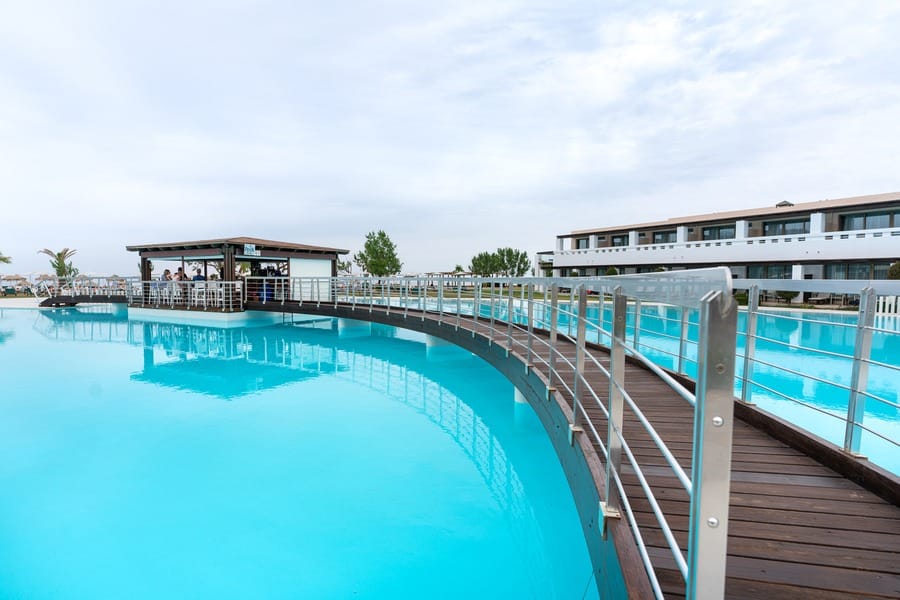
The Bottom Line
Australia & New Zealand’s modern culture has been permanently transformed by Greeks, immigrating Down Under in the wake of World War II. I have to admit, I never fully fathomed the tight bonds between these unlikely friends. But after experiencing this tour in Crete, now I do.
When Greece faced their greatest threat during the most turbulent period in modern history, ANZACs heeded the call. Australia and New Zealand gave all they could, protecting Cretans like their own. In reciprocation, Greece gave back what Australia needed most – culture and good food (sorry England).
Today most international tourists see Crete as a drool-worthy vacation destination with pretty pink beaches, and legendary cuisine. But there’s more. Just look below the surface.
This is an island of history and drama, sacrifice and courage. Ground zero for the pivotal battle that proved there can be victory in defeat. That the underdog can still taste victory.
The ramifications of the 1941 Battle of Crete have touched every person on this planet.
And I, for one, am grateful to learn all this… without a classroom in sight.















































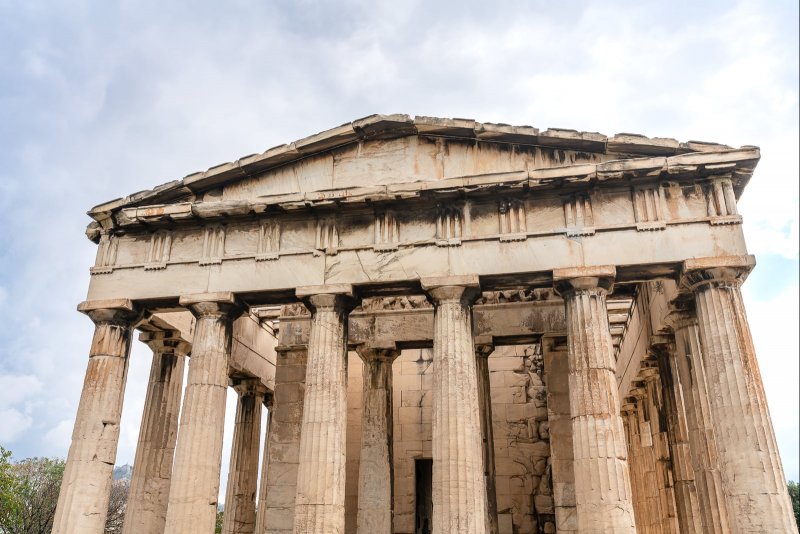











Reader Comments...
"I respond to every comment by direct private email. I look forward to your feedback" - Josh BenderVery informative thank you
Hey, Very Nice Content and useful article. It's gonna help me a lot.
Thanks for writing such a great post This post is Very informative.
Result
Write Your Comment
Please DO NOT include links, URLs or HTML in your comments - they will be automated deleted and you will waste your time.